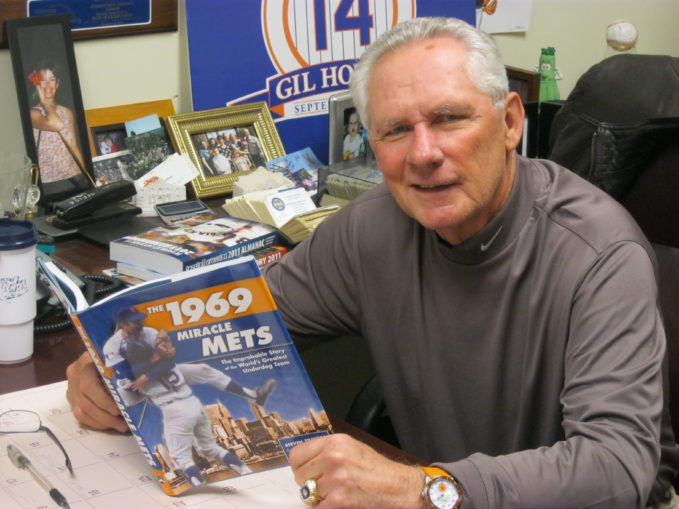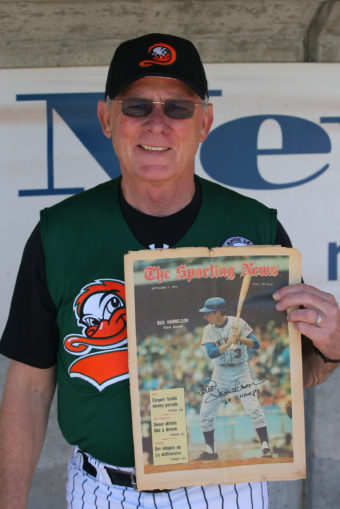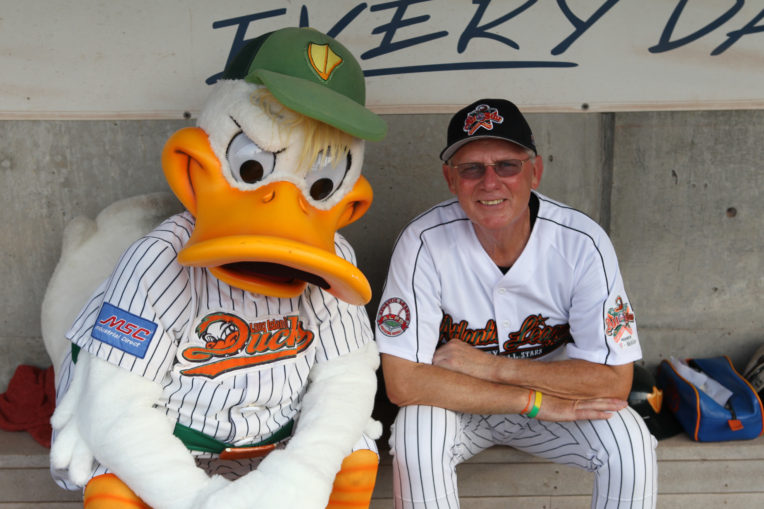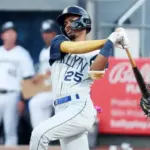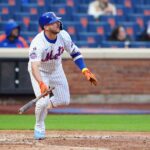Former New York Met shortstop Buddy Harrelson has served as an ambassador for the Long Island Ducks for the past 12 seasons. He does a fine job with community and fan relations, but his true worth to the team involves his 16 years of MLB playing experience and another 11 years as a coach/manager.
Harrelson will always be remembered as the pesky shortstop for the 1969 World Series Champion Mets. Buddy played stellar defense at shortstop and came up with big hits all season.
In addition to his role as a player on the ‘69 team, Buddy served as the third base coach for the 1986 Mets, making him the only player/coach associated with both World Series titles in franchise history. (Technically, ‘86 Mets manager Davey Johnson would fit this category as well, since he made the last out of the ’69 series while playing for the Baltimore Orioles).
Buddy has great memories from both teams. He’ll always remember celebrating the franchise’s first ever World Series title in ’69 and racing Mets third baseman Ray Knight down the third base line in Game 6 of the ’86 Series after the ball had trickled through Bill Buckner’s legs.
This year marks the 25th anniversary of the ’86 team, and Buddy will never forget the emotion he felt after the Mets battled back in Game 6 and took Game 7.
“You get older, and you’re not involved in winning and losing, but I was really happy and excited,” said Harrelson.
Harrelson affirms that the main similarity between the teams was the strong bullpen in the late innings. Tug McGraw and “Dr.” Ron Taylor were a great tandem in ’69, while not many bullpens in history matched the combination of Roger McDowell and Jesse Orosco in ’86.
Though Harrelson claims that both teams had pitching depth, he is well aware of the differences between the two squads. The ’86 started hot out of the gate and never cooled down until October, while the ’69 team didn’t take off until mid summer.
The ’69 team was a disciplined group of ballplayers under manager Gil Hodges, while the ’86 team was known as a fiery bunch. Davey Johnson let them play since the team’s chemistry on the field overshadowed any off-the-field incidents.
However, Harrelson believes the ’69 team showed more consistency and had a better starting pitching staff. While Dwight Gooden, Ron Darling, Bobby Ojeda and Sid Fernandez were tough, matching up against Tom Seaver, Jerry Koosman, Gary Gentry, Jim McAndrew and Don Cardwell was a difficult task. In fact, the ’69 starting staff was so good that Hodges was forced to keep Nolan Ryan—a Hall of Fame pitcher who threw seven career no-hitters—in the bullpen.
“I always say the ’69 team would beat the ’86 team because I have to,” Harrelson said. “I played on the ’69 team.”
Harrelson says the camaraderie of the ’69 team still exists to this day. His roommate during road trips was none other than Seaver.
“Seaver’s like a brother to me,” said Harrelson.
Buddy has used his playing and coaching experience in the big leagues to the benefit of the Ducks franchise. Whoever comes in contact with him not only appreciates his baseball knowledge but also his fun-loving attitude.
“Buddy is a tremendous asset to the Ducks,” said Michael Pfaff, Ducks general manager. “So many people that come to the ballpark have watched him play, or watched him coach, or watched him manage, or grown up as kids watching him here as this ballpark.”
Since Buddy is enjoying what he’s doing, he sees no need to get back involved with the majors.
“This is fun,” said Harrelson. “It’s been fun for a lot of years. I don’t get tired of it. I don’t get tired of going to the ballparks, signing autographs, doing my thing.”
Buddy will continue to “do his thing” as he serves as a pioneer for the Ducks and independent league baseball in general.

